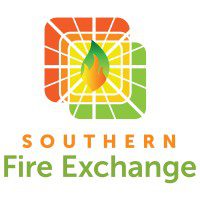Events

Right seedling for reforestation: Success, partners, and policy
Webinar recording. Climate Impacts on Regeneration- Hear from three subject-matter experts on seedling success across elevational ranges and with varying genotypes: Justin Crotteau, Research Forester, Rocky Mountain Research Station Aalap Dixit, Assistant Professor, New Mexico Highlands University Bryce Richardson, Research Geneticist, Rocky Mountain Research Station Indigenous Knowledge Exchange and Work on the Ground! Hear from…

Fueling collaboration: Talking about fire
Webinar registration. From building firelines to researching fire trends over time, fire management and science require great communication to be successful. Our panel will share their experiences and tips on how to effectively talk about fire to gain support and build a collaborative network. We'll address your questions about fire science communication and discuss best…

17th International Wildland Fire Safety Summit
Conference website. As it is already set by tradition, the Conference in Coimbra, Portugal, aims to provide an up to date on the developments in forest fire science and technology and an opportunity to meet persons and institutions, to promote international cooperation in this research and management area. Following its previous editions, the scope of…

5th National Cohesive Wildland Fire Management Strategy Workshop
Workshop website. This Workshop is considered “mission critical” for anyone working on these issues in local, state, Tribal and federal agencies, and organizations as well as non-governmental organizations and private companies. There is no other forum in the nation that provides these opportunities.

USFS Wildfire Crisis Strategy Roundtables: Recommendations and next steps
Webinar recording. In the winter and spring of 2022, the National Forest Foundation (NFF), in coordination with the USDA Forest Service, hosted a series of roundtables across the country to gather input on the Wildfire Crisis Strategy Implementation Plan. The NFF distilled these productive discussions with Forest Service employees and partners into regional reports and…

Science x Forests USFS webinar series
Webinar recordings. Monday, November 14 SCIENCE x Forests: Silviculture for the present and future A compendium of silviculture treatments for forest types in the United States: Silviculture guidance to support modeling, scenario planning, and large-scale simulations, presented by Thomas Schuler Prescribed burning considerations following mechanical treatments, presented by Sharon Hood Reforestation in an era of…

The hydrology of western juniper in central Oregon
Webinar recording. Dr. Carlos Ochoa’s research focuses on connections between ecohydrological processes and human interactions in an ever-changing climate. Dr. Ochoa has numerous research projects, one of which is a long term study in central Oregon that has provided critical information regarding vegetation and hydrology interactions in western juniper dominated landscapes. This presentation will discuss…

Communication strategies for range professionals – A webinar series
Webinar recording. How will you deliver your message to the right people? Rangeland professionals know a lot about rangeland ecology and management, but not about marketing, especially online communication. Online communication is here to stay, investing time now to learn more about it will prepare you for the future.

Increases in large wildfire driven nighttime fire activity observed across the conterminous US
Webinar recording. This presentation discusses the results of 17 years of active fire data from Moderate Resolution Imaging Spectroradiometer (MODIS) to characterize the daytime and nighttime dynamics of wildfires across the continental US. Whereas daytime fire activity was widely detected regardless of fire type, nighttime fire activity was mainly detected inside wildfires and particularly within…

Geo-Fencing Summit
Day 1 Recording Day 2 Recording Summit hosts: Matt Reeves – Rocky Mountain Research Station and Dwayne Rice – Region 2 Rangeland Program Manager Background: Geo-fencing provides some unique advantages over conventional fencing approaches. This is especially true when we consider the devastation to fencing, and other rangeland infrastructure, caused by wildfires. Geo-fencing is increasingly…

